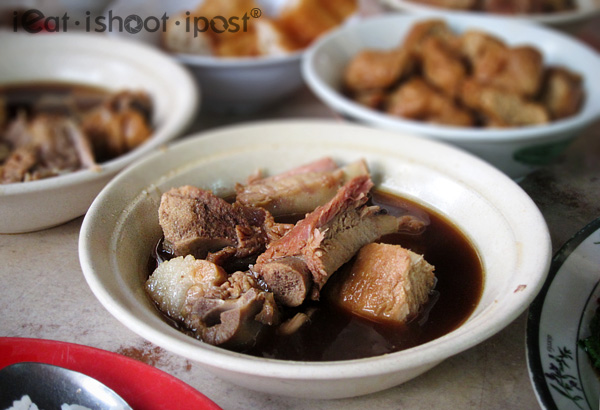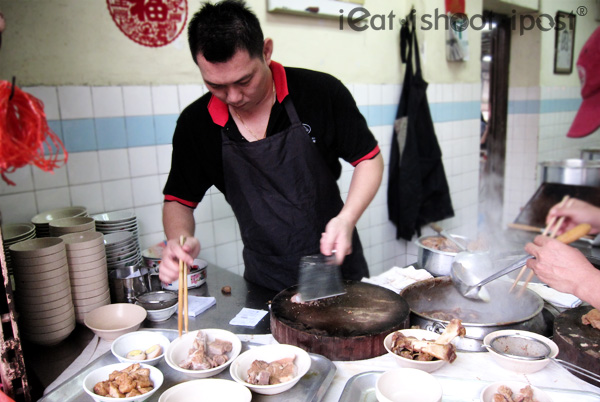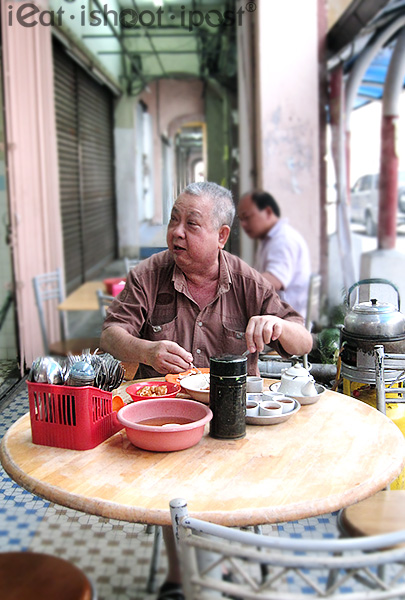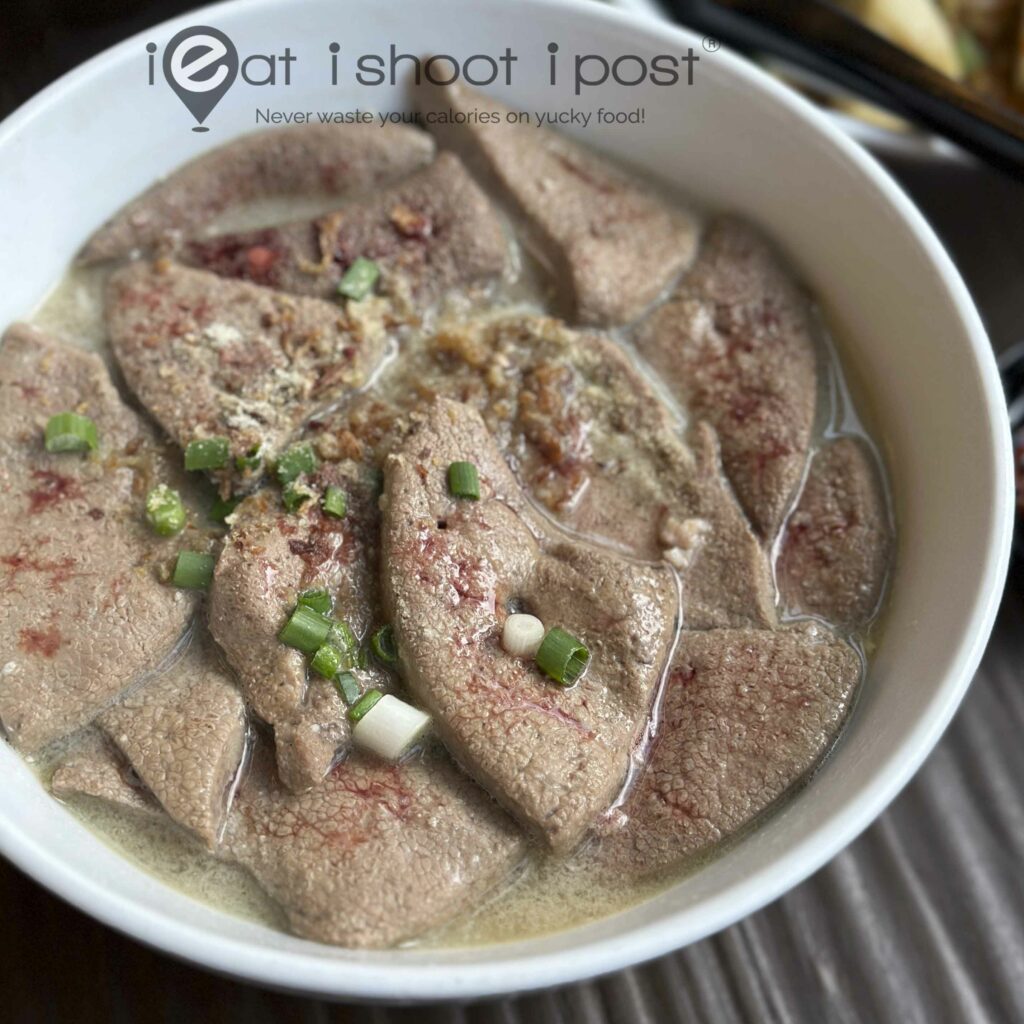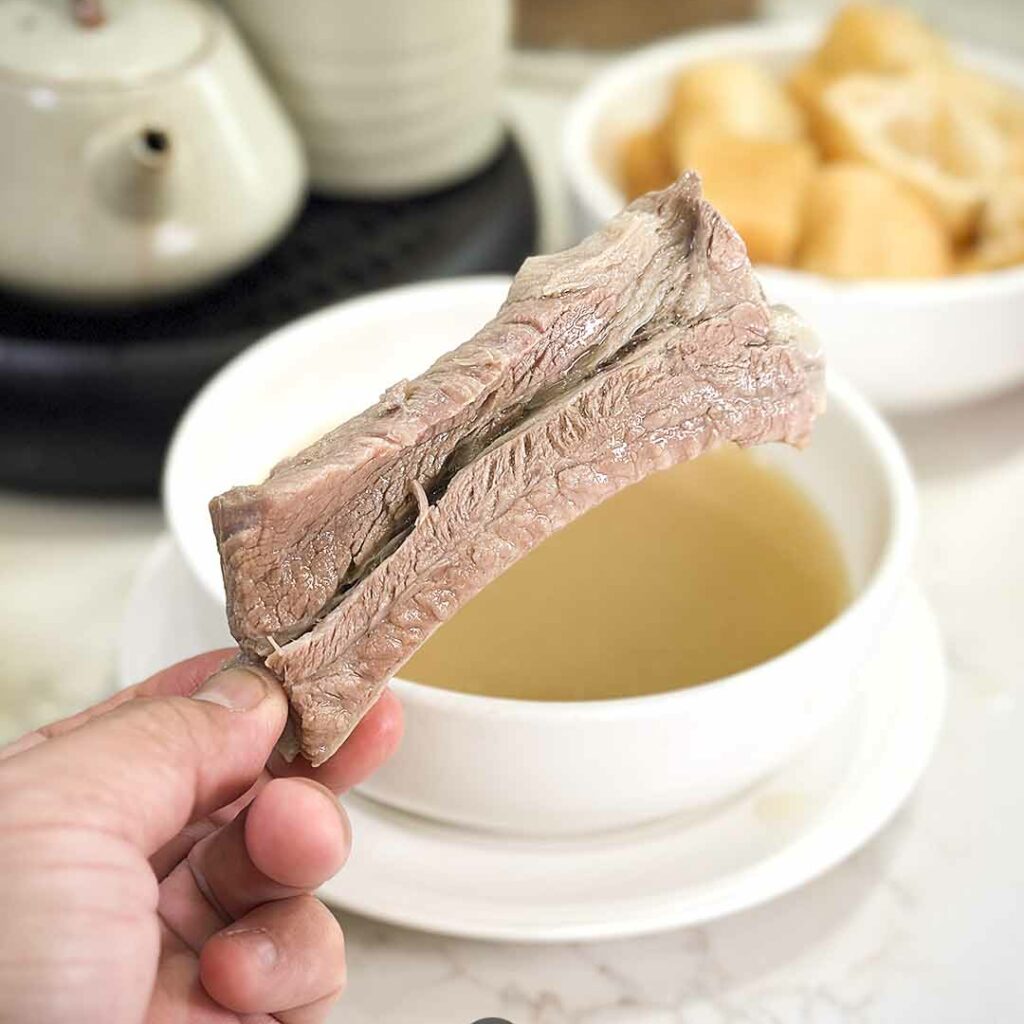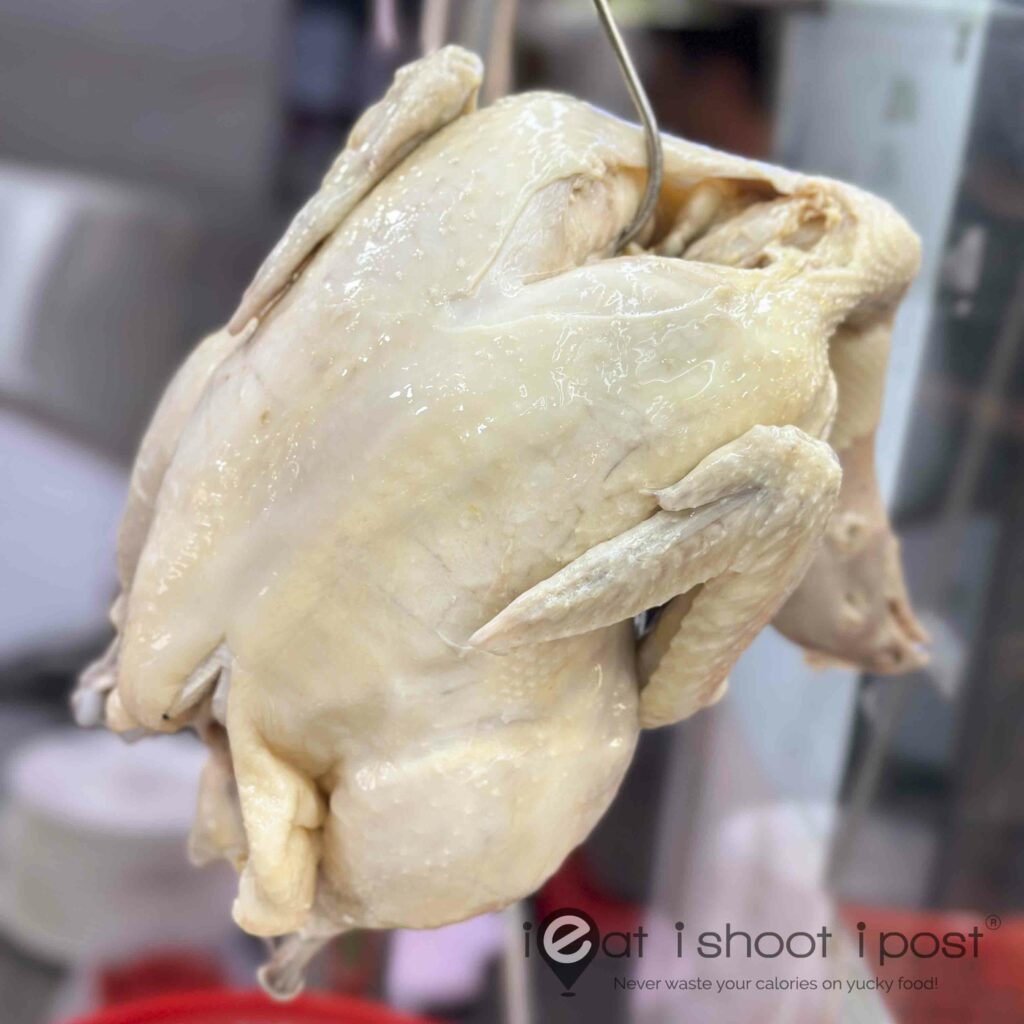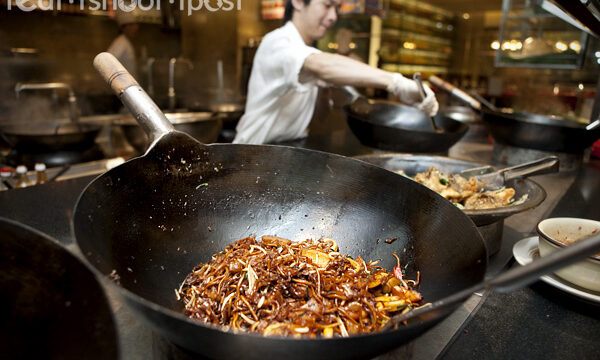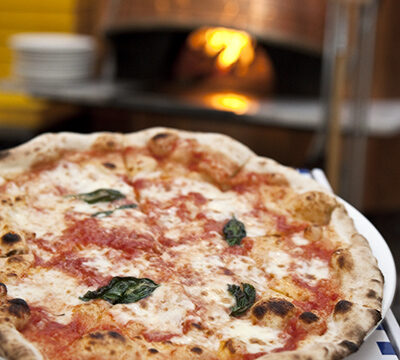My search for the origins of Bak Kut Teh has finally brought me to Klang, the place where many Malaysians believe to be the birthplace of Bak Kut Teh. There is not doubt that the people of Klang thrive, nay, survive on this veritable mix of various pork parts simmered in a dark and powerful herbal concoction. I was told that they have over a hundred shops in this small town serving Bak Kut Teh and some Klangers can have it for breakfast everyday!
The Malaysian Tourism Minister claimed in 2009 that Bak Kut Teh was Malaysian in origin. Actually I can’t blame her for saying what she did because that is what they actually believe.
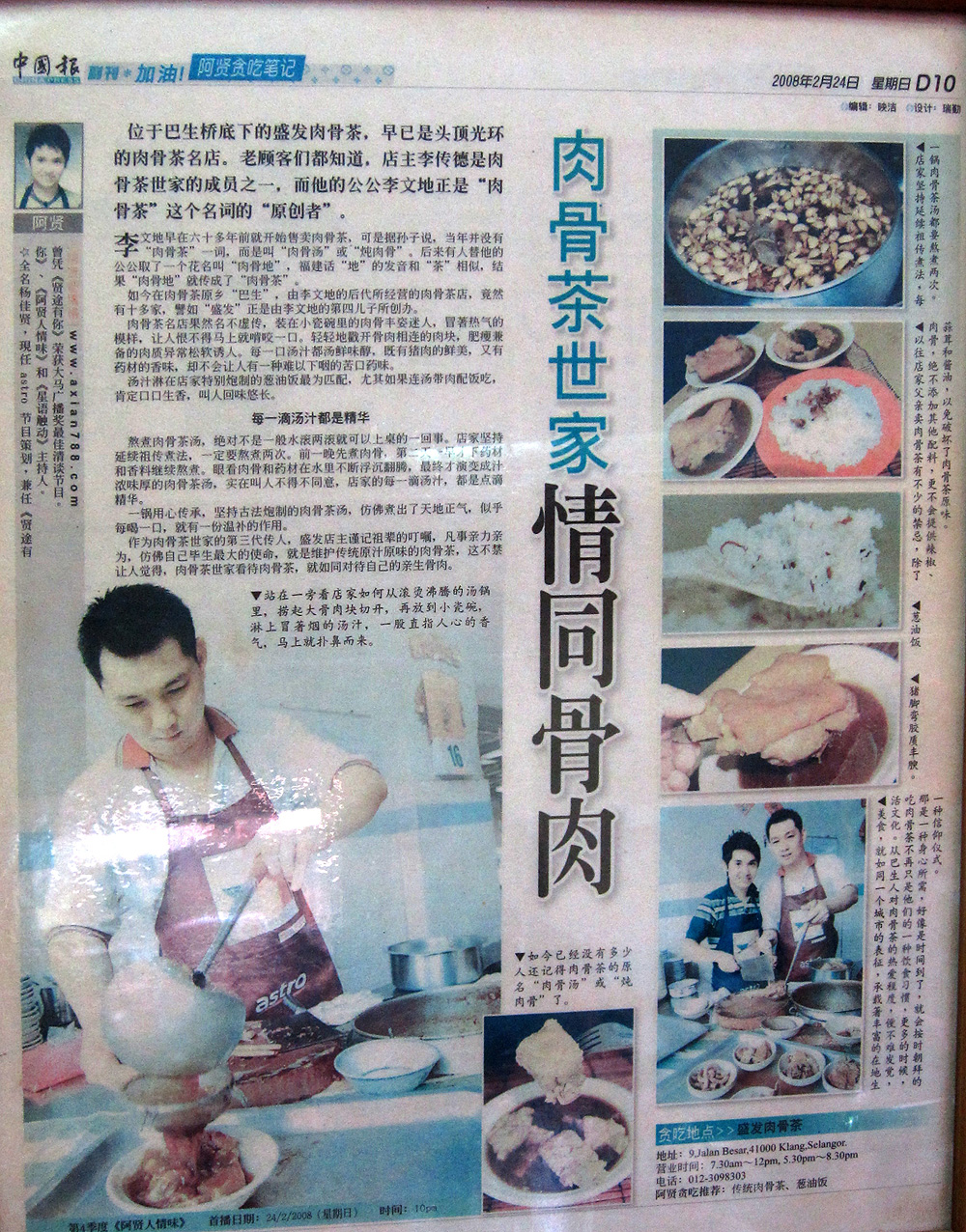
According to their story, this particular stall, Seng Huat was the very first Bak Kut Teh stall which was set up just after WWII. The founder’s name was Lee Wen Di 李文地 and he started selling his mix of Pork Bone Soup which became so famous that they called the dish after him. In the early days, 肉骨茶 Rou Gu Cha (Bak Kut Teh) wasn’t called Rou Gu Cha but 肉骨汤 Rou Gu Tang. But because Lee Wen Di’s dish was so popular, they started to call it 肉骨地 Rou Gu Di which in the Hokkien dialect is pronounced Bak Kut Teh. You can read the story for yourselves in the newspaper cutting.
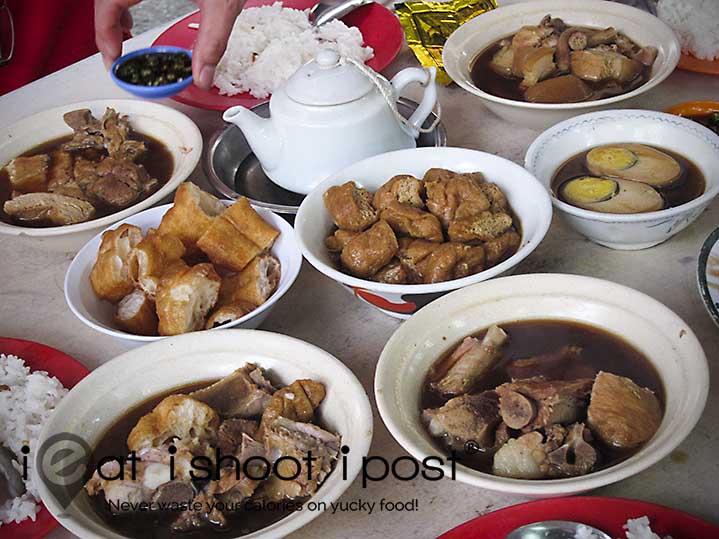
Having this piece of documentation is important in my search for the origins of Bak Kut Teh because it gives us a reference point in time. I do not doubt that perhaps that is how the name Bak Kut Teh originated in Klang but in Singapore, we do have evidence that Bak Kut Teh was already being served around the Clarke Quay area before the war.
I spoke again to the boss of Pek Sin Choon Tea Merchants, Kenry Peh, whose grandfather started the Tea business in Singapore before the war. He told me that his 大伯 Tua Peh (Oldest paternal uncle), Mr Pek Bok Kim, 86, can still recall having Bak Kut Teh with his grandfather Pek Kim Au before WWII. Even then he remembered that they used to serve a pot of tea with their pork bone soup.
In my previous post, I stated that Bak Kut Teh was a Teochew invention. That point needs to be clarified. As far as the peppery version of Bak Kut Teh is concerned, yes, it is the Teochews who invented it. However, pork bone soup probably is Hokkien in origin because of the fact that we Teochews don’t call meat “Bak”, we call it “Nek”. So the name Bak Kut Teh would point to a Hokkien origin. However, the practice of serving Gong Fu Tea is Teochew in origin as the Teochews are famous for being the biggest tea drinkers in China. So what we really have here is a dish that is uniquely Singaporean in that it was born out of the fusion of two of the two major dialect groups who migrated here.
Origins aside, you can’t dispute the fact that Klang really is the place for Bak Kut Teh. My friend Desmond insisted that we leave our hotel in KL at 7am in the morning to take a half an hour taxi ride to Klang for Bak Kut Teh because, as I said earlier, people in Klang can eat Bak Kut Teh almost everyday and the places can get quite packed later in the morning.
Seng Huat is the original Bak Kut Teh stall but we were told that it isn’t necessarily the best in everyone’s books. When we got there at 7.30am, the place was still relatively quiet and the young man who was busy hacking away at the chopping block just happens to be the third generation owner of the shop. They sell their Bak Kut Teh in personal portions, so each person gets to order his own selection of porcine anatomy. What makes Klang Bak Kut Teh different from Singapore’s version, aside from the strong herbal element in the soup, is that they offer more variety of pig parts. It was ironic that I ended up eating Bak Kut Teh with pork innards and meat rather than pork bone as the prime ribs were already sold out by 7.30am!
Conclusion
Seng Huat is good, but I can imagine Bak Kut Teh to be even better based on how some people can rave about it! So which is your favourite Bak Kut Teh in the KL/Klang area?
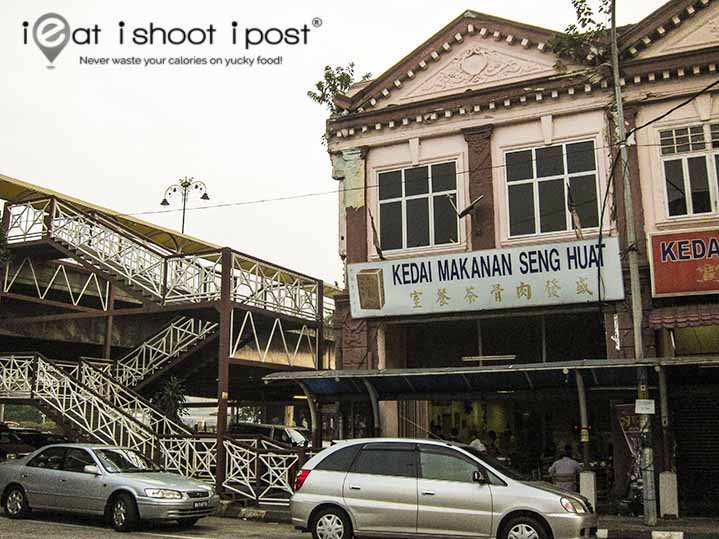
Travel Notes: There are several bridges in Klang. If you cross the old bridge and you will spot the signboard at the side of the shophouse, then make another round and instead of going over the bridge, keep left and go under the bridge. PS go early. We were there at 7.30am and the crowds were already building up.



